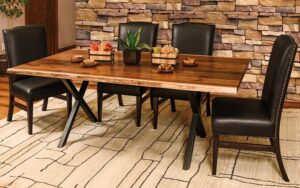Bring a youthful look to your home without going into debt

The orange shag houses carpet has lost its luster. The yellowed wallpaper is peeling off here and there. Kitchen cabinets are older than their owner. We’ve all seen houses that in the distant past were modern and tastefully decorated, but which the most charitable souls now describe as “old-fashioned.” How did they get there? And, more importantly, how can we prevent our home from coming to this?
How do houses carpet go out of style?
Most of us would prefer to live in a modern, up-to-date home, but two powerful forces are working against us: time and money.
Changes are slow. Who among us has never been amazed when we meet a childhood friend to see how much he has changed? In contrast, we generally feel that we change very little ourselves. We are all constantly chan
houses
ging, but since we find ourselves in front of a mirror every day, we do not realize it. The same is true for our house. It loses a bit of its shine every day, and the signs of wear are becoming more and more evident. But since the changes are small, what is obvious to a visitor seeing our house for the first time is not necessarily obvious to us.
Home improvements are expensive. Home improvement projects often come with hefty bills, sometimes tens of thousands of dollars. And the more ambitious a project, the more expensive it is. The problem is often that we don’t see the urgency to rejuvenate our home until SEVERAL things need updating (which brings us back to the first force working against us). It is then that the importance of the work to be done and the costs to be incurred to bring your house up to date can generate a feeling of helplessness.
How to prevent your house from falling into disuse?
The first principle to follow when undertaking home renovations is to avoid doing everything at once. Since ignoring it is the best way to backtrack or go over budget, let’s say it again: Don’t. Done. Not. All. In. Same. Time. Whether you’re looking to renovate an already shabby home or remedy the signs of the passage of time, take it step by step by making a few improvements each year.
“ Break down your list into smaller projects. Can small projects be grouped together? »
Here are eight simple steps you can take to make your home look young again or to keep it in good condition:
Make a list : Start by making a list of all the improvements you would like to make over the next ten years. Distinguish the work that needs to be done (to stop worrying about leaks every time it rains) from the work that you would like to do (to finally have that granite countertop). The list could be long, but don’t despair. This is still just a wishlist.
Price each improvement : There are several websites that can help you estimate the costs of different home improvements, such as Home Advisor and the Canadian Home Builders’ Association . During this estimate, ask yourself if you are able to do some work yourself. Do-it-your selfers can save considerable amounts of money.
Figuring out how much you can spend each year is the hardest part for many of us. Before including home improvements in your budget , check how much you earn and spend monthly. These calculations will take some effort if you’ve never done them, but the work is worth it. It will help you better understand how much you can invest in home improvements each year.
Break your list down into smaller projects : Take a look at your list and ask yourself if you can do the home improvements based on smaller projects. For example, a kitchen renovation could be the subject of three smaller and less expensive projects: the floor, the counter and the cabinets. Can small projects be grouped together? Try to ensure that each “small project” that you carry out each year is of a similar cost. If several projects exceed the budget you established in step 3, review them and determine if it is possible to limit the scope even further. You may also need to cut certain expenses from your budget to free up cash.
Set your priorities : a family meeting may be necessary at this stage. Why not bring some treats? Although this is an art rather than a science, you should generally consider two factors:
The level of urgency. Is the roof leaking? Is the boiler about to give up the ghost? Security enhancements should be at the top of your list.
Life quality. Would an extra bedroom in the basement improve your family’s life more than renovating a bathroom? What changes will have the greatest impact on your quality of life?
Save : After establishing your budget, open a savings account for your home renovations. If you want to wait until you have the money in hand before starting the work, it can be a high-interest savings account . If you prefer to start the renovations by paying the costs during the following year, you can use a low-cost line of credit . Whichever method of financing you choose, make sure you have a plan to pay for the expenses you will incur.
Start the work : this is the most fun step. After you have compiled a list of improvements to be made, determined which ones are priorities and found the necessary funds to carry them out,
Review, Eliminate, Repeat : Revise your list once a year. Have your priorities changed? Does your budget need updating? Start planning the work to be done next year.
A home improvement plan will help you keep your home up-to-date, always have projects in store, and most importantly, avoid the stress and debt burden of getting started. in an overly ambitious undertaking.








